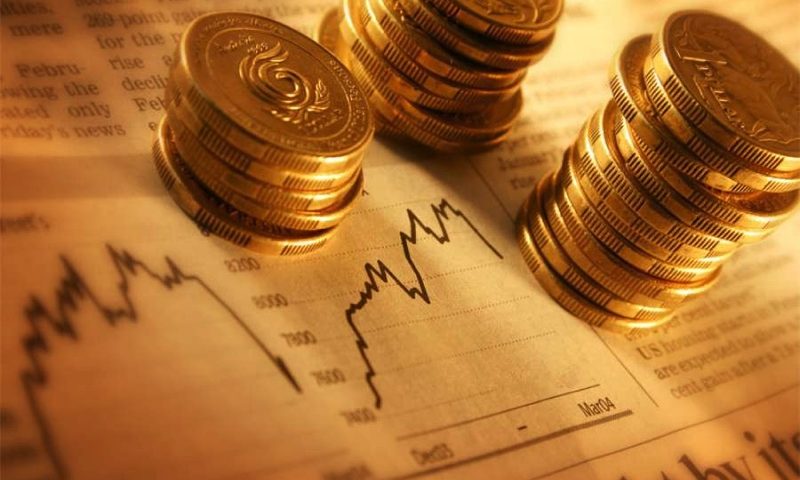Leong-dated U.S. government debt yields rose modestly Monday as investors positioned ahead of a Thursday report on consumer inflation that could refire market concerns about rising pricing pressures in the U.S. as the economy rebounds from COVID.
Rate moves in government debt also come as Treasury Secretary Janet Yellen said it would be acceptable if President Joe Biden’s fiscal-spending plan contributes some inflationary pressures, anathema to assets with a fixed value.
How Treasurys are performing
- The 10-year Treasury yield TMUBMUSD10Y, 1.561% was at 1.570%, up 1.1 basis points, versus 1.559% on Friday at 3 p.m. Eastern Time.
- The 30-year Treausury TMUBMUSD30Y, 2.232%, known as the long bond, was yielding 2.251%, up 1.2 basis points, compared with 2.239% to end last week.
- The 2-year Treasury note TMUBMUSD02Y, 0.156% yielded 0.155%, up from 0.149% last week.
Treasury prices and yields move in opposite directions.
Fixed-income drivers
As the Dow Jones Industrial Average DJIA, -0.36% and S&P 500 SPX, -0.08% lost ground Monday but remained near record highs, bond prices edged lower and yields for longer-dated debt clambered somewhat higher.
Fixed-income investors said that in an otherwise quiet week, a report on consumer prices on Thursday could prove another big catalyst for Treasurys, especially after consumer-price index for April soared 0.8% to match the biggest monthly increase since 2009.
Meanwhile, Yellen told Bloomberg News over the weekend that the Biden administration’s spending plan would be good for the U.S., even if it contributes to rising inflation and results in higher interest rates.
That said, the Treasury secretary said she expects pricing pressures, the market’s most significant fear in the economic rebound from COVID, to be temporary and due to factors including supply-chain bottlenecks rather than representing a sustained price rise.
Yellen estimated that inflation will remain elevated at 3% year over year until about the year.
Biden is championing a roughly $4 trillion budget plan that is widely viewed by strategists as holding the potential to contribute to further pushing inflation up. Biden and Sen. Shelley Moore Capito, R-W.Va., were set to meet Monday or Tuesday in an attempt to reach a bipartisan agreement on infrastructure spending. Biden on Friday rejected an offer by Capito to add around $50 billion to Senate Republicans’ $928 billion plan.
Biden, who last week cut the size of his infrastructure proposal to $1.7 trillion, told the lawmaker he wants at least $1 trillion in new spending over current levels versus $250 billion in the Republican plan, according to reports.
“We’re seeing some inflation but I don’t believe it’s permanent,” Yellen said at a news conference Saturday after the G-7 finance meeting in London, Bloomberg reported.
Long-dated yields fell at the end of last week after the U.S. economy added 559,000 new jobs in May, a further sign that widespread labor shortages are holding back an economic recovery. Economists surveyed by Dow Jones and The Wall Street Journal had produced a consensus forecast for a gain of 671,000.
Although, many investors saw the May rise in payrolls as mildly disappointing, the rebound from the April reading was a positive, some strategists have said.
The Wall Street consensus estimate was for a gain of 671,000 in May, based on a poll of economists by Dow Jones and The Wall Street Journal.
April payrolls were raised to show a rise of 278,000, versus an initial estimate of 266,000. Analysts last month had looked for a payrolls rise of around 1 million.
The Fed is in the midst of a media blackout period, ahead of its two-day policy meeting starting June 15.
What strategists are saying
“Secretary Yellen comments overnight on rates, spending and inflation. Essentially higher on all fronts not a bad thing for the economy and society,” wrote Gregory Faranello, head of U.S. rates at AmeriVet Securities, in a Monday note.
“As for markets coming out of Friday payroll numbers: we don’t view it as an opportunity to add new risk. There is every reason to believe the economy and job market will continue to move forward heading through the summer. Short term, the grab for yield makes some sense. We don’t view the employment number as changing much for the Fed,” he wrote.

